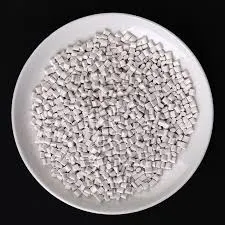The Role of Chemical Treatment Tanks in Industrial Processes
In the realm of industrial manufacturing and wastewater management, chemical treatment tanks play a vital role in ensuring that processes are efficient, safe, and environmentally friendly. These tanks are designed to facilitate the mixing, reaction, and storage of chemicals necessary for various applications, including water treatment, metal finishing, and chemical processing. Understanding their function and significance is crucial for industries that rely on chemical reactions to achieve their goals.
Function and Design
Chemical treatment tanks come in various shapes and sizes, tailored to meet specific operational requirements. Typically constructed from materials like stainless steel or fiberglass, these tanks are equipped to withstand corrosive substances and high-pressure conditions. Their designs often include features that promote thorough mixing and reaction of the contents. Agitators and mixers are commonly installed to enhance the interaction between chemicals, ensuring that reactions occur uniformly and effectively.
The primary function of a chemical treatment tank is to mix reactants and control the conditions under which a chemical reaction takes place. For instance, in wastewater treatment facilities, these tanks are utilized to mix hazardous waste with neutralizing agents or coagulants. This process transforms harmful substances into less toxic forms which can be safely discharged into the environment. Thus, the tank not only contains the reactants but also ensures that the entire chemical process is controlled and monitored.
Importance in Environmental Protection
Chemical treatment tanks are integral to protecting the environment and ensuring public safety. Municipal wastewater treatment plants, for example, rely heavily on these tanks to treat effluents before they are released into water bodies. The processes within these tanks are designed to remove harmful pollutants, pathogens, and other contaminants from wastewater, thereby preventing adverse effects on aquatic ecosystems and public health.
chemical treatment tank

In the manufacturing sector, chemical treatment tanks facilitate processes that might otherwise pose a risk to the environment. For example, metal plating and finishing operations produce toxic byproducts that can be harmful if discharged untreated. By using chemical treatment tanks, industries can treat these chemicals, neutralizing them and recovering valuable resources. This not only supports regulatory compliance but also promotes sustainability by minimizing waste.
Operational Challenges and Innovations
While chemical treatment tanks are essential, operating them comes with challenges. One significant issue is corrosion, which can lead to leaks and structural failures. Regular maintenance schedules and the use of corrosion-resistant materials can mitigate this risk. Additionally, the handling and storage of hazardous chemicals require strict adherence to safety protocols to prevent accidents and exposure.
Innovation in technology has also transformed the operation of chemical treatment tanks. Advanced monitoring systems now provide real-time data on the conditions within the tanks, including temperature, pH levels, and pressure. This data allows operators to make informed decisions and adjustments during the chemical processes, enhancing efficiency and safety. Furthermore, automation is increasingly being integrated into these systems, streamlining operations and reducing the potential for human error.
Conclusion
Chemical treatment tanks are indispensable in modern industrial practices, playing a crucial role in environmental protection and public safety. Their ability to safely and efficiently manage chemical reactions underscores their importance in various sectors, from wastewater treatment to manufacturing. As technology progresses, the capabilities and efficiency of these tanks are likely to improve, further enhancing their effectiveness in meeting the challenges of today’s industrial landscape. In a world increasingly focused on sustainability and environmental responsibility, chemical treatment tanks will remain a cornerstone of safe and effective chemical management.

